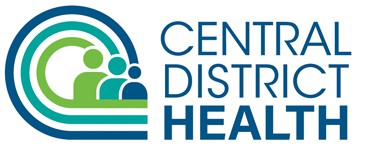Summary
At this time, there are no reported cases of measles in Idaho; however, there are ongoing measles outbreaks in Washington, New York and Texas.
Healthcare providers should consider measles in patients presenting with a febrile rash illness and clinically compatible symptoms, especially if the patient recently travelled internationally or to areas in the United States experiencing a measles outbreak.
Symptoms
Measles is characterized by a prodrome of fever (as high as 105 degrees F), malaise, cough, coryza, conjunctivitis, and Koplik spots followed 2-4 days later by a maculopapular rash which begins on the face and moves downward and outward to trunk and extremities. Immunocompromised patients may not exhibit rash or may exhibit an atypical rash. The incubation period for measles from exposure to fever is usually about 10 days (range, 7 to 12 days) and from exposure to rash onset is usually 14 days
(range, 7 to 21 days).
Lab Testing
Both antibody and PCR testing are the preferred method to confirm measles infection. Specimens should include:
- 5ml blood in a red top or serum separator tube for Measles IgM and IgG testing
- Throat, nasal or nasopharyngeal swab in viral transport media for PCR
Serology should be processed through commercial laboratories.
The Idaho Bureau of Laboratories (IBL) can offer PCR testing on specimens from patients with compatible symptoms only. There may be an associated fee for testing.
Contact Virology/Serology at IBL at 208-334-0589 and see the IBL sampling and submission guideline at http://healthandwelfare.idaho.gov/Portals/0/Health/Labs/SSG/Clinical_Measles_RTPCR.pdf.
Detailed information about measles laboratory testing can be found at: http://www.cdc.gov/measles/lab-tools/index.html
Healthcare Infection Control
The measles virus is transmitted by direct contact with infectious respiratory droplets or by airborne spread when an infected person breathes, coughs, or sneezes. Measles virus can remain infectious in the air for up to two hours after an infected person leaves an area.
When possible, use phone triage and assessment to determine if patients who might have measles need to be seen in-person.
If a patient needs to be evaluated in-person or arrives unexpectedly with symptoms compatible with measles, then follow these recommendations:
- Immediately mask the patient, and place them in a room with the door closed
- Perform the evaluation in a negative pressure room, if possible
- Regardless of presumptive immunity status, all healthcare staff entering the room should use respiratory protection consistent with airborne infection control precautions (N95 respirator or a PAPR – powered air-purifying respirator).
- After the patient leaves, the exam door should remain closed and the room should not be used for at least two hours.
- Instruct the patient to self-isolate at home if measles is likely.
- If an exposure occurs in the healthcare setting, attempt to record contact information to facilitate infection prevention / public health follow-up.
Reporting
Please report suspect measles case-patients to Central District Health Department at (208) 327-8625 or the Bureau of Communicable Disease and Prevention at (208) 334-5939. If reporting after hours or weekends, contact State Comm at 1-800-632-8000.
Additional Information
For information about presumptive evidence of immunity, see http://www.cdc.gov/measles/hcp/index.html#immunity
For MMR vaccine recommendations, see https://www.cdc.gov/measles/hcp/index.html#vaccination

